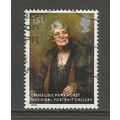Liverpool - Metropolitan Cathedral of Christ the King RC - postcard 1970s
- Condition : Used
- Dispatch : 2 Days
- Brand : None
- ID# : 99587560
- Quantity : 1 item
- Views : 374
- Location : United Kingdom

- Seller : justthebook (+1704)
- Barcode : None
- Start : Sun 31 Mar 2013 10:12:43 (BST)
- Close : Run Until Sold
- Remain : Run Until Sold
More Listings from This Seller view all
Seller's Description
- Postcard
- Picture / Image: The Metropolitan Cathedral of Christ the King, Liverpool - Roman Catholic Cathedal - south porch entrance
- Publisher: English Counties Perodicals Ltd., Leamington Spa
- Postally used: no
- Stamp: n/a
- Postmark(s): n/a
- Sent to: n/a
- Notes / condition:
Please ask if you need any other information and I will do the best I can to answer.
------------------------------------------------
Postage & Packing:
UK (incl. IOM, CI & BFPO): 99p
Europe: £1.60
Rest of world (inc. USA etc): £2.75
No additional charges for more than one postcard. You can buy as many postcards from me as you like and you will just pay the fee above once. (If buying postcards with other things such as books, please contact or wait for invoice before paying).
Payment Methods:
UK - PayPal, Cheque (from UK bank) or postal order
Outside UK: PayPal ONLY (unless otherwise stated) please. NO non-UK currency checks or money orders (sorry).
NOTE: All postcards are sent in brand new stiffened envelopes which I have bought for the task. These are specially made to protect postcards and you may be able to re-use them. In addition there are other costs to sending so the above charge is not just for the stamp!
I will give a full refund if you are not fully satisfied with the postcard.
----------------------------------------------
Text from the free encyclopedia WIKIPEDIA may appear below to give a little background information (internal links may not work) :
*************
Metropolitan Cathedral of Christ the King[2] (usually known as Liverpool Metropolitan Cathedral) is a Roman Catholic cathedral in Liverpool, Merseyside, England. The cathedral is the seat of the Archbishop of Liverpool[3] and the Roman Catholic Archdiocese of Liverpool.[4] The Metropolitan Cathedral is one of two cathedrals in the city. The other, the Anglican Cathedral Church of Christ in Liverpool, is about 0.5 miles (0.8 km) to the south.[5] The Grade II* Metropolitan Cathedral is one of Liverpool's many listed buildings. It is sometimes known locally as ""Paddy's Wigwam"" or the ""Mersey Funnel"".
The cathedral's architect was Englishman Frederick Gibberd, the winner of a worldwide design competition. Construction began in 1962, and took five years. Earlier designs for a Catholic cathedral in Liverpool had been proposed in 1853, 1933, and 1953, but none were completed.
During the Great Irish Famine (1845–1852) the Catholic population of Liverpool increased dramatically. About half a million Irish, who were predominantly Catholic, fled to England to escape the famine; many embarked from Liverpool to travel to North America while others remained in city.[6] Because of the increase in the Catholic population, the co-adjutor Bishop of Liverpool, Alexander Goss (1814–1872), saw the need for a cathedral. The location he chose was the grounds of St. Edward's College on St. Domingo Road, Everton.[7]
In 1853 Goss, then bishop, awarded the commission for the building of the new cathedral to Edward Welby Pugin (1833–1875).[8] By 1856 the Lady Chapel of the new cathedral had been completed. Due to financial resources being diverted to the education of Catholic children, work on the building ceased at this point and the Lady Chapel – now named Our Lady Immaculate – served as parish church to the local Catholic population until its demolition in the 1980s.[9]
Following the purchase of the present 9-acre (36,000 m2) site at Brownlow Hill in 1930,[7] Sir Edwin Lutyens (1869–1944) was commissioned to provide a design which would be an appropriate response to the Giles Gilbert Scott-designed Neo-gothic Anglican cathedral then being built further along Hope Street.[10]
Lutyens' design was intended to create a massive structure that would have become the second-largest church in the world. It would have had the world's largest dome, with a diameter of 168 feet (51 m) compared to the 137.7 feet (42.0 m) diameter on St. Peter's Basilica in Vatican City.[11] Building work based on Lutyens' design began on Whit Monday, 5 June 1933,[11] being paid for mostly by the contributions of working class Catholics of the burgeoning industrial port.[12] In 1941, the restrictions of World War II wartime and a rising cost from £3 million to £27 million[13] (£991 million as of 2013),[14] forced construction to stop. In 1956, work recommenced on the crypt, which was finished in 1958. Thereafter, Lutyens' design for the Cathedral was considered too costly and was abandoned with only the crypt complete.[11]
[edit] Scott's reduced design
After the ambitious design by Lutyens fell through, Adrian Gilbert Scott, brother of Giles Gilbert Scott (architect of the Anglican Cathedral), was commissioned in 1953 to work on a smaller cathedral design with a £4 million budget (£83 million as of 2013).[14] He proposed a scaled-down version of Lutyens' building, retaining the massive dome. Scott's plans were criticised and the building did not go ahead.[7]
type=printed postcards
theme=topographical: british
sub-theme=england
county/ country=lancashire
number of items=single
period=1945 - present
postage condition=unposted
Listing Information
| Listing Type | Gallery Listing |
| Listing ID# | 99587560 |
| Start Time | Sun 31 Mar 2013 10:12:43 (BST) |
| Close Time | Run Until Sold |
| Starting Bid | Fixed Price (no bidding) |
| Item Condition | Used |
| Bids | 0 |
| Views | 374 |
| Dispatch Time | 2 Days |
| Quantity | 1 |
| Location | United Kingdom |
| Auto Extend | No |



 for 1 item(s)
for 1 item(s)

















